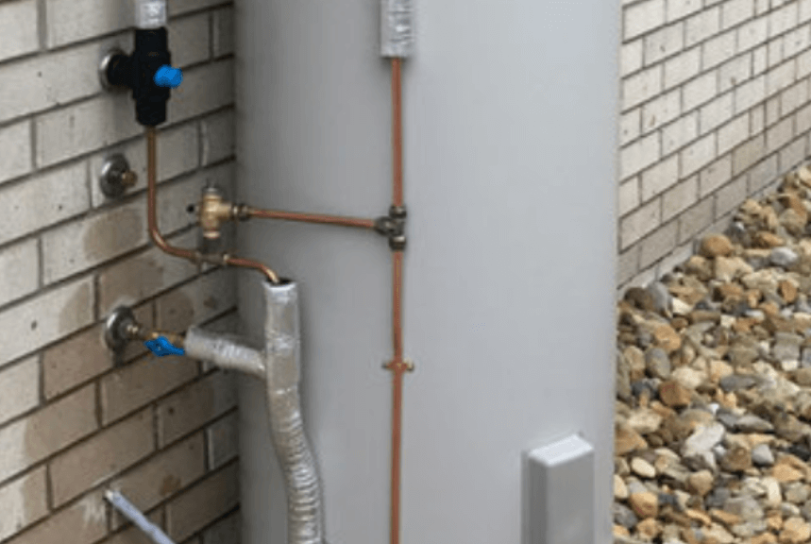Extending the lifespan of your hot water system can be a relatively easy job. Regular maintenance significantly helps in ensuring that your system is in tip-top shape at all times. Draining and flushing is one way you can make sure that your hot water heater is free of debris that could interfere with how it works.
Property owners looking for highly experienced and skilled hot water plumbers need only to call or message us. The Local Plumber has been at the forefront of attending to the needs of hot water systems in properties across Melbourne. Our local emergency plumbers are experts in installing all hot water system types and attending to issues affecting these systems.
Steps in Draining and Flushing the Water Heater:
- Shut off the water supply
- Drain the tank by connecting a hose to the drainage valve
- Run cold water through the tank to flush particles
- Allow the tank to empty
Draining the Hot Water System
Regular maintenance is the way to go if you want your hot water system to last its expected lifespan. For reference, gas hot water heaters generally last between 8-12 years and electric heaters last between 10-14 years. If your system is starting to have issues around these time frames, we highly recommend contacting a plumber to assist with the replacement before attempting any of the below steps
However, if your system is not near this time frame, routinely checking the state of your water heater helps discover issues such as leaking and defective heating elements. It also ensures that no foreign objects are adding stress to the system.
While it is always best to have a professional plumber do the work, knowing every step helps when draining the water heater on your own. The following are general steps to flush water out of the system:
- Turn off the cold water supply – Shutting off the cold water supply is done by twisting the valve located near the top of the system.
- Connect a hose to the drainage valve – At the water heater’s bottom, connect a hose to the drainage valve.
- Open the drainage valve – After opening the valve, you may notice some particles. It is normal to see these things while flushing the water heater.
- Run cold water through the system – When the tank is fully empty, turn on the cold water supply and let it run until the water is clear.
- Allow the system to empty – Once there’s clear water, it is time to turn off the cold water valve and allow the system to empty again. Next, close the drainage valve and disconnect the hose.
As previously mentioned, we highly recommend contacting a fully licensed plumber to assist with draining your system. One simple mistake could end up costing you more in damages.
Refilling the Water Heater
Draining the system is just one step in the routine maintenance of your hot water system. After ensuring that the system has been fully drained, the next step is to refill the hot water system with water.
- Turn on the cold water valve
- Wait to be filled
- Turn on the cold water tap in sinks or tubs
- Turn the gas or electricity back on
- Wait for the water to heat up
- Check for leakage
In the event that something goes wrong, it is always best to contact a 24 hour plumber.
Reasons to Drain the Hot Water System
Even if you have yet to flush your hot water system, now is the perfect time to start doing so. Removing dirt, grime and mineral deposits is the number one reason why it is a must to drain and refill your water heater.
Common Issues Affecting Hot Water Units
Knowing which water heater issues commonly impact your system can help motivate you to drain and restart your hot water system. The following problems are some that usually impact hot water systems in homes and commercial spaces:
- No hot water – A variety of reasons could cause the lack of hot water. A tripped circuit breaker, gas leak and a malfunctioning heating element are some of the factors behind this problem.
- Hot water leaks – Like when there’s no hot water, several factors can contribute to leaking in your system. A corroded hot water tank, damaged valves and loose connections are usual suspects when this happens.
- Dirty hot water – Corrosion is most likely the suspect when there is discolouration in your hot water. A failing sacrificial anode is the culprit in some cases but it could also be due to corrosion affecting other components.
- Water takes time to heat up – A bad gas burner, faulty heating element and sediment buildup commonly cause this problem. It is important to note that instantaneous hot water systems also take time before they can deliver hot water.
- Burst hot water system: Old age, excessive pressure and loose fixtures are typically the most common reasons which cause a water system to burst.
- Noisy water heater – Banging, popping and rumbling are unusual noises that come from the hot water system. These sounds indicate there is something wrong with the system’s heating elements. Flushing and de-scaling work in some cases while others need the expertise of a hot water plumber to replace the entire unit.
Hot water systems are not immune to common plumbing emergencies. As mentioned above, it is a must to have it regularly drained and inspected to ensure it is properly working at all times.
Melbourne’s Preferred Plumber for Hot Water System Installation and Repair
Attending to the needs of various hot water system types has been a specialty of us in recent years. With the most qualified hot water plumbers, we have been the preferred emergency plumbing service provider across Melbourne. From installation to repair, we have got everyone covered. Every “fast plumber near me” in our team has seen all issues affecting electric, gas-fuelled and solar-powered systems through the years. After more than two decades in business, we have helped deal with gas leaks, tripped circuit breakers and circulation pump issues affecting water heaters.
Our team also specialise in other emergency plumbing services, including blocked drain repair, roof leak repair and commercial plumbing services. To experience top-notch customer service and to also provide a long-term solution to your hot water system needs, contact The Local Plumber now to have us visit your home today!

